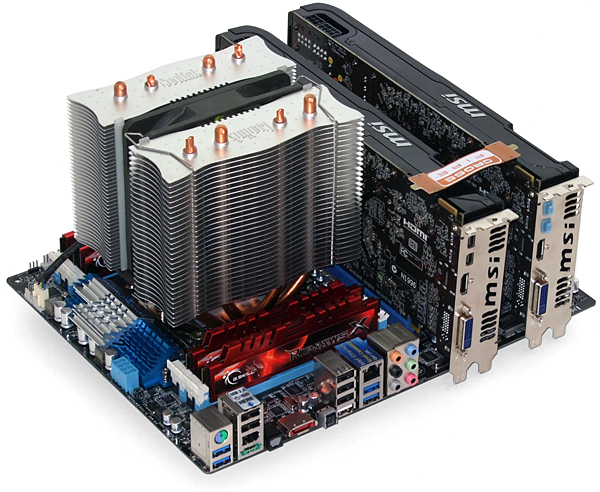Does Memory Performance Bottleneck Your Games?
Not all games are held back by graphics performance. Some seem to be CPU-limited. However, we've even seen benchmark results that appeared to be affected by memory bandwidth. Today we compare quad-channel, dual-channel, and low-latency configurations.
Could Memory Really Be Holding You Back?
Every few years we write a story showing how most applications get the most performance out of ordinary memory. Today, "ordinary" means DDR3-1600. Recently, something changed though. We observed noticeable speed-ups in at least one game after changing a few memory settings. Since we still had the system from FX Vs. Core i7: Exploring CPU Bottlenecks And AMD CrossFire set up, we thought it'd be a perfect time to follow our CPU-oriented gaming analysis with a version more intently focused on memory.
The things we said about frequency and timings six years ago still apply today. CAS latency is still measured in cycles, DDR3-2133 cycles are still twice as quick as DDR3-1066 cycles, and so DDR3-2133 CAS 10 still has the same response time as DDR3-1066 CAS 5. Moreover, DDR3-2133 continues to offer twice the bandwidth of DDR3-1066.
Fortunately, chasing value doesn't mean you're stuck at DDR3-1066, and bandwidth-seekers are no longer stuck at CAS 10. Cheap DDR3-1600 and mid-priced DDR3-2133 CAS 9 are now the norm.
Combining those developments in memory technology with the availability of quad-channel platforms, we have the perfect chance to compare frequency, latency, and bus width. That is, we can make such a comparison without resorting to unrealistically-handicapped configurations.
We're armed with an overclocked CPU and a pair of high-end Radeon HD 7970s in CrossFire to alleviate bottlenecks. So, how much gaming performance can we extract from a few changes in memory configuration?
Get Tom's Hardware's best news and in-depth reviews, straight to your inbox.
Current page: Could Memory Really Be Holding You Back?
Next Page Test Settings And Benchmarks-
SteelCity1981 Well considering my Core i7 840QM cpu can only support a max of DDR3 1333 i'm pretty at a dead end in terms of upgrading to faster ram.Reply -
cumi2k4 so....bottom line: don't bother buying higher clock memory unless it cost nearly the same?Reply -
Crashman cumi2k4so....bottom line: don't bother buying higher clock memory unless it cost nearly the same?The bottom line is that the price difference is ALREADY so small that anyone who can afford a pair of high-end GPUs should bother to get the good DRAM as well.Reply -
mayankleoboy1 if i was the owner, i would fire the programmers who developed the memory bottlecked game engine.Reply -
esrever CrashmanWow, talk about not reading the article! Here's a hint, from the article you didn't read:Bottom line: Buy the fastest memory you can afford, AT LEAST DDR3-1866, unless you're certain that the slower memory you're buying can be overclocked.unless you care about 150 fps vs 120 fps I don't see the pointReply -
hero1 Nicely written. My next rig which is going to be in couple months will have the DDR3-1866MHz in it. That's as far as I will go with RAM.Reply -
itzsnypah So the point of this article is with a $2k (8gb ram) computer spend an extra 1% ($20) for 1% gaming performance increase that you only get sometimes? Very linear scaling me thinks, sometimes.Reply -
fkr Am I reading this correct when I see in metro that dual channel is faster than quad channel. Also crashman I am pretty sure that very few people care how many fps you get in f1 2012 since the game is pretty terrible, metacritic user score of 6.8/10. reading through the reviews of that game it seems to not even be updated since 2011 edition, at least not the physics. I also thought the article says unless your doing eyefinity and intel hd whatever it makes little difference. I also seem to remember about a year ago another article stating how little difference ram made in a system, ram speed that is.Reply -
fkr If you are down to your last twenty dollars do you put it towards better ram or CPU. i5 3570 or a 3570k. I think the k edition is better money spent, but maybe somebody cares about f1 2012, crash"in my mothers basement"man.Reply
jk -
jase240 I would like to see how faster RAM effects loading times, that's the ONLY reason I can imagine paying a little more. And even then 1866 would probably be fine, considering most will overclock to 2133 well.Reply
Although in reality 1600 can do the job just fine and it could overclock nicely too if you get the right RAM.

